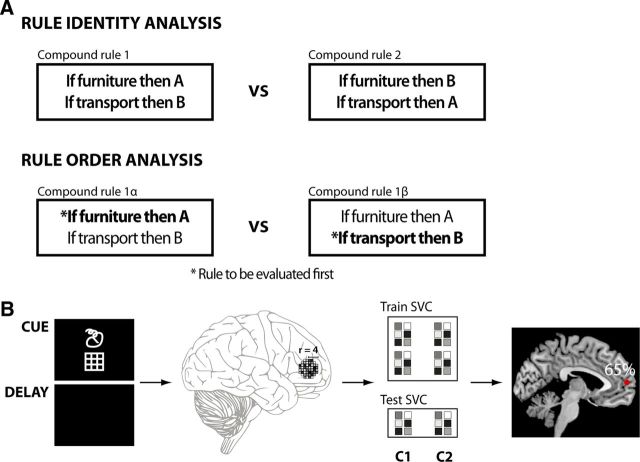Figure 2.
A, The factors considered in the two main analyses on rule identity and rule order. The rule identity analysis contrasts different compound rules. Notice that in both rule classes, the same basic elements are involved: furniture/transport and A/B symbols. Rule-order analysis contrasts the same compound rules but with different order assignments. B, Schema of the searchlight decoding analyses. We considered only the brain activation during the cue and the delay phase. Local pattern of activation in spherical clusters were extracted for each condition and in each fMRI run. The data were then separated into a training set and a test set. A pattern classifier, Support Vector Classification (SVC) was trained to distinguish the two experimental classes (e.g., C1 vs C2) using only the data from the training set. The performance of the classifier was then assessed on the test set and the computed accuracy assigned to the voxel at the center of the spherical cluster. The position of the spherical cluster was then systematically changed to explore the whole brain. The result of this iterative process is a whole-brain accuracy map showing the distribution of local information on the two considered experimental classes.

